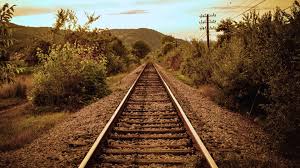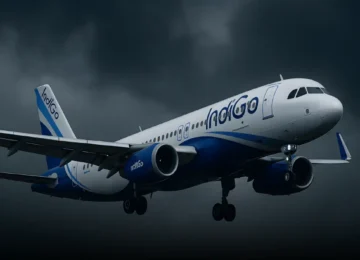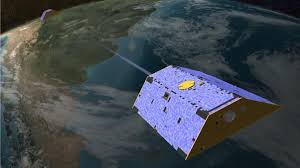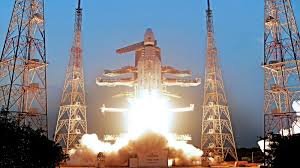New Delhi — In a major infrastructure push, the Union Cabinet on October 7, 2025 approved four railway multitracking projects worth approximately ₹24,634 crore, spanning across Maharashtra, Madhya Pradesh, Gujarat, and Chhattisgarh. The projects, part of the PM Gati Shakti National Master Plan, will add about 894 kilometres of additional line capacity and aim to decongest key trunk routes, enhance freight movement, bolster regional connectivity, and spur economic growth.
Project Details & Route-wise Plans
According to the official Press Information Bureau release, the four approved projects will cover 18 districts across the four states.Here’s a breakdown:
Project Type of Expansion Route / States Length (km) Purpose / Significance
Wardha – Bhusawal 3rd & 4th line Maharashtra 314 km Enhance capacity in the Mumbai–Howrah high-density corridor
Gondia – Dongargarh 4th line Maharashtra & Chhattisgarh 84 km Support coal and freight movement across central India
Vadodara – Ratlam 3rd & 4th line Gujarat & Madhya Pradesh 259 km Strengthen Delhi–Mumbai corridor linkages
Itarsi – Bhopal – Bina 4th line Madhya Pradesh 237 km Address congestion on major north–south link
Completion of these works is targeted by 2030–31
The projects are expected to improve connectivity to approximately 3,633 villages, serving a combined population of around 8.584 million (85.84 lakh). Among the affected districts are two Aspirational Districts — Vidisha in Madhya Pradesh and Rajnandgaon in Chhattisgarh.
Strategic & Economic Rationale
Decongesting Key Corridors
Many of India’s most trafficked routes run on just two or three tracks, often causing bottlenecks for freight and passenger services. Adding third and fourth lines is seen as essential to reduce delays and allow parallel traffic flows. The approved corridors are part of high-density routes like Mumbai–Howrah and Delhi–Mumbai, and thus carry significant freight movement.
Railway Minister Ashwini Vaishnaw emphasized that these projects will not merely lay tracks but “lay the foundation for a more connected and prosperous India,” improving operational efficiency, reducing logistics costs, and enabling smoother movement of goods and people.
Freight Gains & Logistics Efficiency
Once completed, the projects are projected to handle an additional 78 million tonnes per annum (MTPA) of freight traffic.Key commodities such as coal, containers, cement, steel, food grains, fly ash, and industrial goods are expected to benefit from improved throughput.
The government anticipates savings of ₹3,104 crore in logistics costs over time
Tourism, Regional Development & Environment
The projects are likely to improve access to cultural and ecological destinations such as Sanchi, Satpura Tiger Reserve, Bhimbetka Rock Shelters, Hazara Falls, and Nawegaon National Park, enhancing tourism in the regions
From an environmental standpoint, increased rail capacity (an energy-efficient mode of transport) is expected to reduce diesel consumption by about 28 crore litres and lower CO₂ emissions by 139 crore kilograms, equivalent to planting six crore trees
Reactions from States & Stakeholders
In Madhya Pradesh, Chief Minister Mohan Yadav welcomed the approvals as a “significant gift” to the state, highlighting benefits in employment, logistics, improved mobility, and connectivity to tourism nodes.The projects particularly impress by aligning with the PM Gati Shakti vision of integrated infrastructure development
Railway officials and planners view the multitracking projects as transformative, especially for freight corridors that currently suffer from overutilisation and scheduling conflicts. Interstate trade, industrial clusters, and resource transport hubs stand to gain from faster, more reliable rail linkages.
Some analysts point out that the timeline (completion by 2030–31) is ambitious, and success will depend on land acquisition, coordination across states, ecosystem support, and monitoring of costs and execution.
Challenges & Key Considerations
- Land & Right-of-Way Issues: Acquiring land in densely populated or ecologically sensitive regions may cause delays and cost overruns.
- Funding & Budgetary Discipline: Ensuring the full funding over multiple fiscal years while managing other expenditure priorities.
- Coordination Across Jurisdictions: Multistate projects must navigate varying state-level regulations, forest and environmental clearances, and interagency coordination.
- Execution Risks: Engineering challenges, bridging, grade separation works, and managing train operations during construction will be complex.
- Maintenance & Future Upgrades: Long-term sustainability demands that maintenance and future expansions (e.g., up to six lines) are built into planning.
Looking Ahead
These multitracking projects mark one of the larger such approvals at a national level in recent times, reflecting the government’s intent to modernize critical rail infrastructure in sync with rising demand from freight, industrial growth, and passenger traffic.
Over the next months, Detailed Project Reports (DPRs), environmental & forest clearances, land acquisition, and tendering processes will be crucial preludes. As work begins, monitoring the pace, cost controls, and quality will determine whether timelines hold.
If successfully implemented, the expanded railway corridors could significantly ease congestion, reduce delays, infuse efficiency into the logistics chain, strengthen regional economies, and support India’s ambitions for a world-class transport network.













